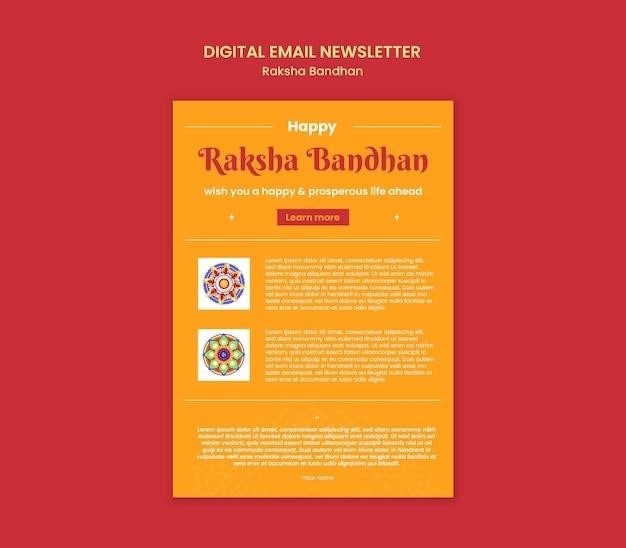
Arabic Language Learning in Bangladesh
Learning Arabic in Bangladesh presents a unique set of circumstances․ While Arabic is primarily associated with Islam, its influence extends beyond religious practices․ This guide delves into the historical connections, available resources, and practical applications of Arabic in Bangladeshi society․ It also examines the relationship between Arabic and Bengali, highlighting their similarities and differences․
The Role of Arabic in Bangladeshi Society
Arabic plays a pivotal role in Bangladeshi society, primarily due to its strong association with Islam, the dominant religion in the country․ The Quran, the holy book of Islam, is written in Arabic, and its understanding is fundamental to Islamic practices and beliefs․ Therefore, Arabic holds significant religious importance for Bangladeshi Muslims․ Beyond religion, Arabic has also contributed to the cultural landscape of Bangladesh, influencing literature, education, and even the Bengali language itself․ Its presence can be seen in the names of people, places, and institutions, reflecting its historical and cultural significance․ The role of Arabic extends to the daily lives of many Bangladeshis, influencing their understanding of religious texts, cultural practices, and even their interactions with the wider Muslim world․
Historical Influences of Arabic in Bangladesh
The historical connection between Arabic and Bangladesh is deeply intertwined with the spread of Islam in the region․ The arrival of Islam in Bengal, the historical region that encompasses present-day Bangladesh, dates back to the 13th century․ Muslim preachers and traders introduced Islamic beliefs and practices, along with the Arabic language, which became the language of religious texts and scholarship․ The influence of Arabic is evident in the architectural marvels of mosques, mausoleums, and other Islamic structures, which showcase intricate Arabic calligraphy and motifs․ The legacy of Arabic can be seen in the names of towns, villages, and historical figures, reflecting the lasting impact of Islamic culture and its linguistic heritage․ This historical influence continues to shape the cultural landscape of Bangladesh, fostering a deep connection between the country and the wider Islamic world․
Arabic Resources for Bangladeshi Learners
For Bangladeshi learners seeking to embark on their Arabic language journey, a diverse range of resources are readily available․ Traditional Islamic institutions, known as madrasas, play a pivotal role in teaching Arabic, particularly for religious purposes․ These institutions offer a structured curriculum that focuses on Quranic Arabic and Islamic studies․ Beyond traditional settings, online platforms have emerged as valuable resources, offering interactive courses, language learning apps, and online dictionaries․ The availability of Arabic textbooks and guides, both in print and digital formats, caters to various learning styles and levels of proficiency․ Additionally, Arabic language schools and institutions in Bangladesh provide structured language programs, catering to both beginners and those seeking advanced fluency․ This wealth of resources empowers Bangladeshi learners with the tools and support needed to successfully acquire Arabic language skills․
Arabic Learning Materials for Bangladeshi Students
Navigating the world of Arabic learning materials can be overwhelming, but for Bangladeshi students, a diverse range of options exist․ From traditional textbooks and online platforms to dedicated language schools, a pathway to fluency is within reach․
Arabic Textbooks and Guides
The traditional foundation of Arabic learning often rests on textbooks and guides․ These resources offer structured pathways to understanding grammar, vocabulary, and pronunciation․ In Bangladesh, a variety of Arabic textbooks cater to different learning styles and levels․ For instance, “Complete Al Quran Arabic-Bangla-English” offers a comprehensive approach to Quranic Arabic, combining the Arabic text with Bengali and English translations, making it accessible for Bangladeshi learners․
For those seeking a more focused approach, textbooks like “alim arabic 1st paper guide pdf” provide specific guidance for academic pursuits․ These resources often incorporate exercises and practice materials to reinforce learning․ While physical textbooks remain popular, the digital age has brought forth online platforms offering interactive exercises, audio recordings, and even virtual tutors, expanding the accessibility of Arabic learning for Bangladeshi students․
Online Arabic Learning Resources
In today’s digital age, online Arabic learning resources have become a valuable asset for Bangladeshi students․ These platforms offer a wealth of materials, from interactive lessons and quizzes to audio and video content․ Websites like “Quran․gov․bd” provide free access to the complete Quran with translations and transliterations in both Bengali and English, making it convenient for Bangladeshi learners to engage with the holy text․
For those seeking more structured learning, platforms like “1-to-1 Online Tuition” provide personalized instruction from qualified tutors․ These platforms cater to various learning styles and accommodate busy schedules․ Furthermore, online resources often feature comprehensive grammar explanations, vocabulary building exercises, and pronunciation guides, all tailored to enhance the Arabic learning experience for Bangladeshi students․
Arabic Language Schools and Institutions in Bangladesh
Bangladesh boasts a network of Arabic language schools and institutions that cater to diverse learning needs․ These institutions play a crucial role in fostering Arabic language proficiency and Islamic knowledge․ Traditional madrasas, often associated with religious education, have long served as centers for Arabic learning in Bangladesh․
In recent years, modern language schools have emerged, offering more secular approaches to Arabic language instruction․ These schools often incorporate contemporary teaching methods, focusing on practical communication skills and cultural understanding․ The University of Dhaka, one of the country’s leading universities, also offers Arabic language courses, contributing to the academic study of the language․ These institutions provide a range of programs, from introductory courses to advanced studies, catering to students of all ages and backgrounds․

Practical Applications of Arabic in Bangladesh
Arabic transcends religious boundaries in Bangladesh, finding practical applications in various aspects of life, from religious practices to trade and commerce, education, and research․
Arabic in Religious Practices
Arabic holds a central position in the religious life of Bangladesh’s predominantly Muslim population․ The Quran, Islam’s holy book, is written in Arabic, making fluency in the language essential for understanding and reciting religious texts․ Islamic scholars and preachers rely on Arabic to interpret the Quran, deliver sermons, and guide worshippers․ Mosques across Bangladesh are filled with the sound of Arabic recitations during prayers, and Islamic festivals like Eid al-Fitr and Eid al-Adha are celebrated with Arabic greetings and traditions․ The importance of Arabic in religious practices fosters a strong motivation for Bangladeshis to learn the language, deepening their connection to their faith and cultural heritage․
Arabic in Trade and Commerce
While Bangladesh’s trade relations with Arab countries have grown significantly in recent years, Arabic’s direct impact on trade and commerce within Bangladesh is less pronounced compared to its role in religious life․ However, the country’s growing economic ties with the Middle East have created opportunities for individuals with Arabic language skills․ This includes roles in international business, import-export operations, and tourism․ Additionally, the presence of Bangladeshi migrant workers in Arab countries has led to a demand for Arabic language proficiency among those seeking employment abroad․ Learning Arabic can open doors to lucrative opportunities in these sectors, contributing to economic development and cultural exchange between Bangladesh and the Arab world․
Arabic in Education and Research
The study of Arabic in Bangladesh extends beyond religious institutions․ Universities and research institutions are increasingly recognizing the importance of Arabic language and literature․ Arabic studies are incorporated into curriculum at various levels, focusing on language acquisition, Islamic studies, and cultural understanding․ Research in Arabic literature, history, and Islamic thought is gaining traction, contributing to a deeper understanding of the region’s rich cultural heritage․ Furthermore, Arabic language skills are essential for Bangladeshi scholars engaged in international collaborations and research projects involving Arab institutions․ This growing academic focus on Arabic strengthens Bangladesh’s intellectual engagement with the Arab world and expands its contribution to global scholarship․
Understanding the Relationship Between Arabic and Bengali
The connection between Arabic and Bengali is multifaceted, reflecting historical interactions, cultural influences, and linguistic exchanges․ Understanding this relationship is crucial for comprehending the nuances of Arabic learning in Bangladesh․
Similarities and Differences in Grammar and Vocabulary
While Arabic and Bengali share roots in the Semitic and Indo-Aryan language families, respectively, their grammatical structures and vocabulary diverge significantly․ Arabic, with its complex verb conjugations and intricate noun declensions, presents a stark contrast to the relatively simpler grammar of Bengali․ Vocabulary, too, exhibits limited overlap, with Arabic words primarily associated with Islamic concepts and practices․ However, the influence of Arabic on Bengali is evident in the presence of loanwords, particularly in religious and scholarly contexts․ These borrowed words have enriched the Bengali lexicon, contributing to its diversity and complexity․
The Impact of Arabic on Bengali Language
The influence of Arabic on the Bengali language is undeniable, though it’s not a direct linguistic relationship․ The introduction of Islam in Bangladesh, coupled with the subsequent adoption of Arabic as the language of religious texts and scholarly discourse, has left an indelible mark on the Bengali lexicon․ Loanwords, particularly in the realms of religion, law, and philosophy, have enriched the Bengali language, adding depth and nuance to its vocabulary․ Furthermore, Arabic grammatical structures have subtly influenced certain aspects of Bengali grammar, though the impact is not as pronounced as in languages like Urdu, which borrows extensively from Arabic․ The presence of Arabic loanwords and grammatical influences underscores the enduring legacy of Arabic in shaping the fabric of the Bengali language․
The Importance of Learning Arabic for Bangladeshi Students
Learning Arabic offers Bangladeshi students a gateway to a rich cultural heritage and a deeper understanding of their own religious and historical context․ Beyond its religious significance, Arabic opens doors to a vast world of knowledge, literature, and scholarship․ The ability to read and understand Arabic texts, from the Quran to classical Islamic literature, enriches intellectual pursuits and fosters a deeper appreciation for the complexities of Islamic thought․ Furthermore, fluency in Arabic enhances career prospects, particularly in fields related to Islamic studies, international relations, and trade with Arabic-speaking countries․ By embracing the study of Arabic, Bangladeshi students equip themselves with valuable skills that contribute to their personal and professional growth, fostering a deeper connection to their cultural heritage and the wider global community․
